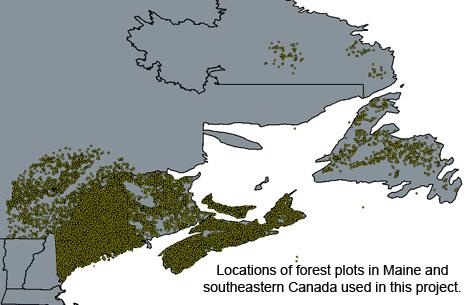Refinement of the FVS-NE Predictions of Individual Tree Growth Response to Thinning

Regional forest growth and yield computer models like the Forest Vegetation Simulator (FVS) are designed to project future forest stand conditions under different management scenarios. These models are widely used in planning for forest management and timber harvesting. However, the current version of the FVS for the Acadian Region of Maine is based on historic data sets and traditional statistical methods, which may limit its accuracy. NSRC researchers revised and refined the Northeast Variant of the model, FVS-NE, and its predictions of individual tree growth, particularly in response to forest thinning.
They compiled an extensive regional network of permanent forest plot data that included over 4 million individual observations from 65 different tree species during the period of 1955 to 2008 throughout Maine and southeastern Canada. They used this data to refit the primary components of FVS. These equations have been incorporated into the Open Stand Model (OSM) software system being developed by Chris Hennigar of the University of New Brunswick. The model now incorporates changes in climate and can be used to forecast changes in forest productivity to predict how well specific tree species will grow under changing environmental conditions.
Overall, the model represents a significant improvement to the existing FVS model and allows a better understanding of regional variation in forest growth and yield. The model will likely see wide application by researchers and forest managers in the Acadian Region to project future forest growth and yield under various management and climate scenarios. For more information, contact Aaron Weiskittel at (207) 581-2857.
